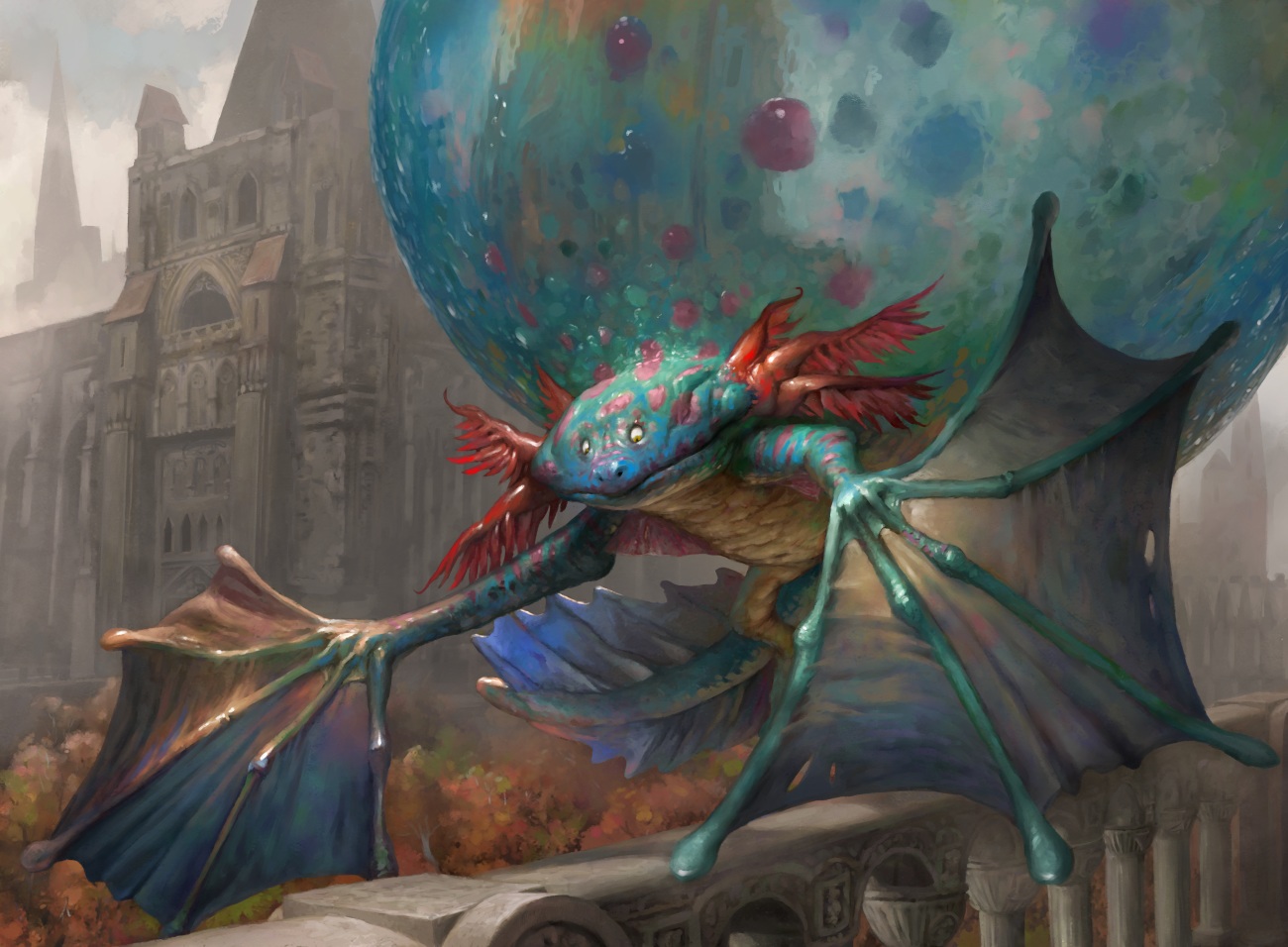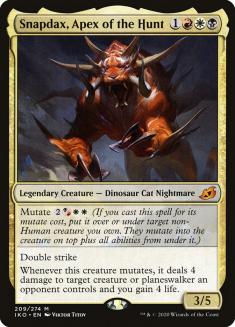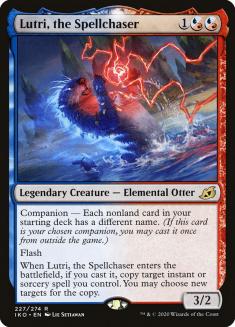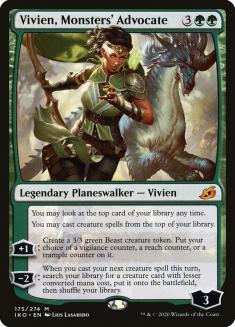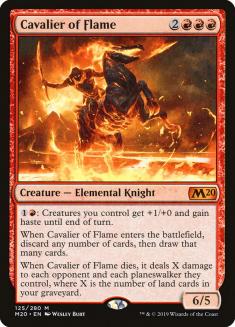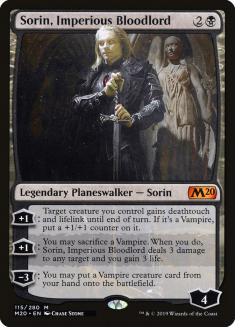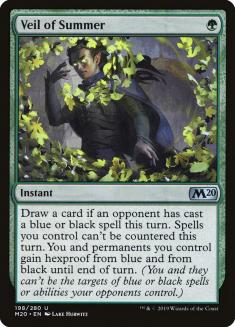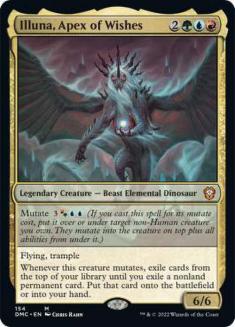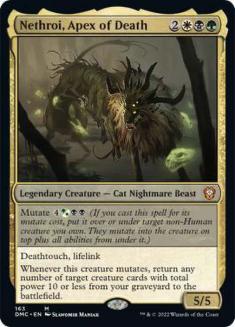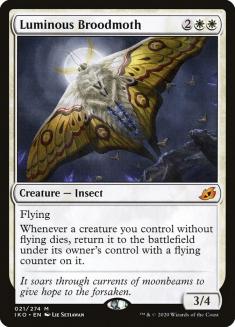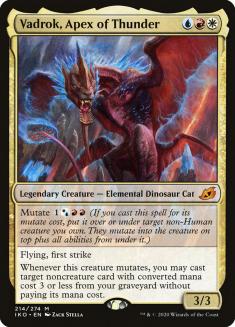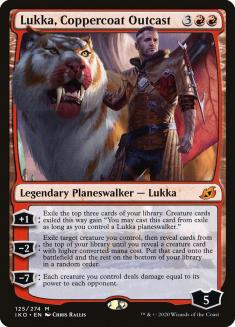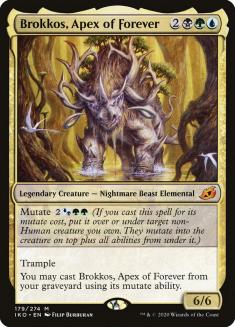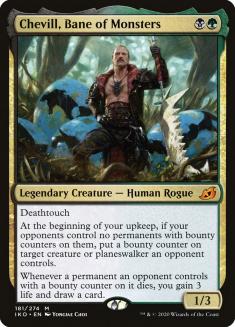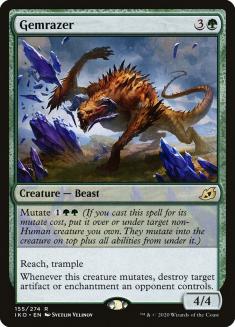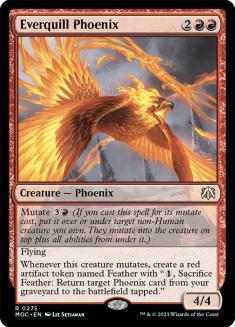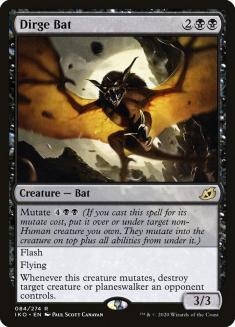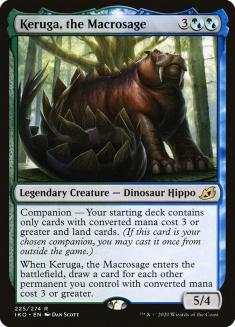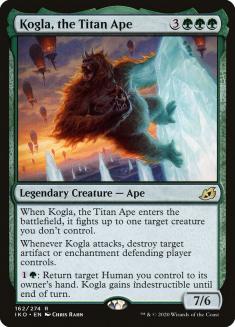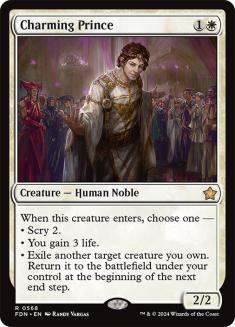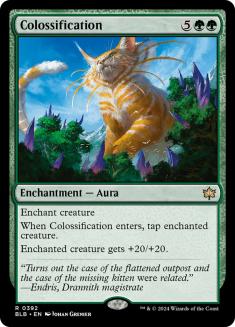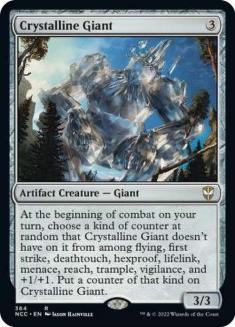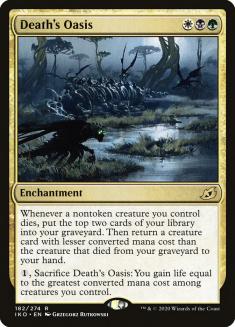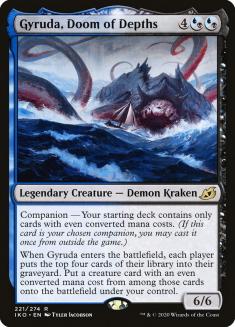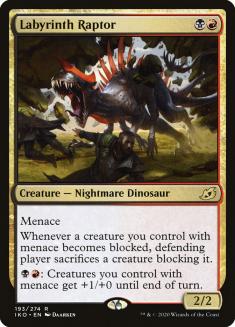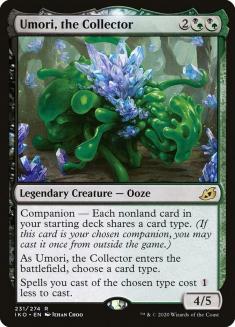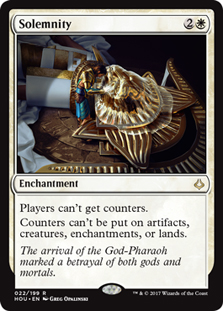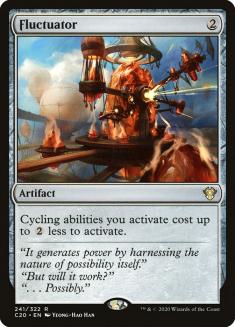Hey now—what’s going on? Did Star City Games get a new finance writer?
Nope — it’s still me! I am a transgender woman, and my name is Cassie. I’ve been in the process of transitioning for about a year now, and I’m thrilled to finally share my authentic self with all of you. It’s been a heck of a journey so far, but transitioning has been the best decision I’ve ever made, by far.
Other than finally getting to attach my true name and gender to this profile (and, perhaps, the addition of a slightly more joyful tone in my writing), nothing about my work will change. I look forward to providing you with the same level of expert financial advice that I’ve been producing for the past decade. For anyone who wants to chat, follow along with my transition, or just shout at me about Otters and Spacegodzillas, you can find me on Twitter @CassieCeleste.
But enough about me — let’s talk about Ikoria Lair of Behemoths!
Ikoria is shaping up to be an absolutely wild set. It’s just as creature-centric as I’d predicted, but instead of being filled with lots of eight- and nine-drops, we’ve got a boatload of incredibly complex multicolored cards with hard-to-evaluate abilities. Oh — and, like, a whole bunch of Godzillas.

Honestly, this is a good thing for Magic finance purposes. Complex and hard-to-evaluate cards tend to have higher deltas between their pre-order prices and their eventual values, leaving more room for money to be made. Well, as long as we can actually figure out which of these hard-to-evaluate cards are actually good.
Pre-order prices are also incredibly low right now. Most new sets have at least a few mythic rares that pre-order in the $20-$30 range, and a few $7-$12 rares leading the way. As of this writing, the most expensive Ikoria mythic is just $15 and the most expensive rare is $3.
That’s unprecedented.
The last time pre-order prices were anywhere near this low? Core Set 2020. Back when I wrote that set review, I told you that the low pre-order prices combined with low projected demand would make Core Set 2020 one of the best-ever sets for pre-ordering. Nearly a year later, I was right. While there aren’t a ton of expensive cards from Core Set 2020 at the moment, I can count more than a dozen cards from that set that would have been easy money if you’d bought in early and sold at the right time. Cavalier of Flame; Sorin, Imperious Bloodlord; Vivien, Arkbow Ranger; Field of the Dead; Veil of Summer … the list goes on and on and on.
Ikoria feels similarly underpriced to me, largely because of the uncertainty going on in the world right now. We don’t know when we’ll be allowed to play paper Magic in groups again, and since so many of us are struggling financially, there isn’t a lot of extra cash to go around. In a normal environment, a lot of these cards would be pre-ordering for 30-50% more than they are right now.
Because of this, buying Ikoria is a little like buying low in the stock market. If you’ve got the extra cash, I recommend being more aggressive than you usually are during the pre-order period. Social distancing won’t last forever, and Ikoria will be Standard-legal until September of 2021. The set be legal in Pioneer, Modern, and Commander forever. If Ikoria doesn’t sell well because people are cash-strapped, some of these cards will be at or near the top of the Standard market once things do return to normal due to an overall lack of supply.
With all that in mind, let’s get to the cards!
Mythic Rares
Vivien, Monsters’ Advocate – $14.99
Vivien, Monsters’ Advocate is incredibly powerful. Emma Handy said it all right here last week, so I won’t spend too much time repeating her argument in detail, but to quickly recap: Vivien, Monsters’ Advocate compares favorably to current top-tier green planeswalkers like Vivien, Arkbow Ranger and Nissa, Who Shakes the World. She’s got relevant static abilities, a +1 that protects herself while increasing your battlefield presence, and a -2 that’s both card advantage and a powerful combo / toolbox ability. It’s true that Vivien, Monster’s Advocate is five mana, but so was Teferi, Hero of Dominaria and that card still managed to spend several months in the $50 range. We know that the most valuable card in Standard can be a five-mana planeswalker.
The only downside? Vivien, Monsters’ Advocate is competing against those other green planeswalkers for space in the Standard metagame. It’s possible that there simply won’t be room for this card alongside Nissa, Who Shakes the World, which would mean that Vivien won’t see much play until War of the Spark rotates out of Standard in the fall. If that happens, there might be a shot to pick these up for $7-$8 in a month or two, making it an incredibly spicy pick-up for the post-social-distancing world.
My guess is that Vivien finds a home before that, though. This is one of the safest buys in the set, and I suspect it’ll spend most of its time in Standard at or above the $20 mark with $50+ upside once the world starts back up. I’m going to try to get a set early.
Illuna, Apex of Wishes – $14.99
Illuna, Apex of Wishes could be the key payoff card that makes the mutate deck hum. We’re going to need a lot of cheap and effective tools at the lower rarities to make it happen, like with adventure in Throne of Eldraine, but the possibility is certainly there.
The fact that you can mutate Illuna on top of some cheap creature (perhaps a creature with hexproof?) and gain a 6/6 flying trample body as well as a free permanent on the battlefield for just five mana makes this one of the most obviously powerful cards in the set.
What’s not to like about Illuna? Well, you probably aren’t going to want to run it without having access to Temur colors, and there’s a lot of competition (and few deck slots) in the five- and six-mana range. Those drawbacks are real, and Illuna may never be anything more than a $5-$7 Commander card long-term, but the upside here is absolutely titanic. Definitely snag a set if you see it start to gain traction in the early days of the new format.
Snapdax, Apex of the Hunt – $12.99
Oh mercy. Snapdax, Apex of the Hunt might even be better than it looks, in large part because double strike is an underrated keyword that has often appeared on some seriously over-costed Magic cards. My guess is that Snapdax and Embercleave are going to teach us all a lesson about double strike that we won’t soon forget.
At any rate, Snapdax is either going to come out as a 3/5 with double strike for four, or it’s going to mutate onto an existing creature (much like Embercleave) while also giving you a free burn spell that represents a potential eight-point life swing. That’s power, reach, and versatility. And if you need any more convincing, check out what Patrick Chapin wrote about the card last week.
Financially, Snapdax has less upside than Embercleave. Embercleave is playable in any red deck, while Snapdax probably requires at least nominal access to all three Mardu colors. It should remain pretty sold in the $10-$15 range with room for more, and it’s likely to be a format-defining card in the new Standard metagame.
Nethroi, Apex of Death – $11.99
Nethroi, Apex of Death is fascinating. Like most of the other Apexes, it’s okay when you cast it and absurd when you mutate it, but oh boy are you going to want to try to mutate this one. Seven mana is a lot, but it can come down at five in a pinch, and it’s going to bring back half your graveyard whenever you do get off that mutate ability. Command the Dreadhorde was Standard-playable, so why not Nethroi?
Just like with these other expensive multicolored mythic rare creatures, the power level isn’t the problem with Nethroi. All of these cards are really good — it’s just a matter of which ones fit into the metagame right now. Nethroi is best in a deck where you’re bringing back a lot of little creatures before sacrificing them again, which is a fairly well-supported strategy in the current metagame but one without a lot of excess room. I can see Nethroi showing up as a two-of or three-of in some new iteration of the Cat Oven combo, which would be good enough to keep it in the $10-$15 range. Beyond that, I don’t think Nethroi will do much. It’s powerful, but it’s narrow. Buy in if you want to play with it, but I wouldn’t speculate on the card.
Luminous Broodmoth – $9.99
Luminous Broodmoth is a great way for aggressive and midrange white decks to fight back against mass removal. It’s also just a nice way to add resilience to white-based decks, period. The Insect’s stats aren’t terribly impressive on its own, but it becomes a must-kill when paired with any sort of attacking army. If I’m playing any sort of aggressive white deck, this is the curve-topper I want. If I’m playing a midrange white deck, I’m still excited to run this powerful and resilient creature.
Unlike most of the other Ikoria mythics we’ve seen so far, Luminous Broodmoth has a clear path to playability in multiple top-tier decks. It isn’t a fiddly three-color curve-topper for a single archetype — it’s a single-color card that has its uses in aggro, midrange, and perhaps even control decks. I wouldn’t be shocked if Luminous Broodmoth ends up being the most expensive card in Ikoria at some point, and it’s a very safe buy at $10.
Vadrok, Apex of Thunder – $9.99
How far we’ve come since the bygone days of Lightning Angel! Vadrok is quite a bit more powerful, and getting to play a cheap spell again is a nice payoff for its mutate cost. I can definitely see Vadrok becoming the flagship card in a new Jeskai deck, ideally with a bunch of cheap burn and small creatures.
The problem right now, of course, is that the infrastructure for such a deck doesn’t really exist right now. That might change depending on what else Ikoria gives us, but Vadrok is a lot more narrow than Luminous Broodmoth and will require a far greater confluence of things to go right in order to pay off. Definitely snag these if people start creating successful Vadrok brews — it’s a very powerful card — but there’s a shot that this one busts out completely.
Lukka, Coppercoat Outcast – $9.99
If you’re playing Lukka, Coppercoat Outcast, you’re playing it for its -2 ability. Honestly, this seems like one of the easiest Polymorphs in history to win with, because you can fill your deck with a bunch of two-drop or three-drop creatures combined with a handful of the most powerful threats in the format. Heck, I wouldn’t be shocked if Lukka ends up spawning a new archetype in Pioneer and/or Modern as well.
How good will Lukka be in Standard? That’ll depend on what the format gives us to -2 into. Weirdly enough, for a set subtitled “Lair of Behemoths,” there haven’t been a ton of high-CMC creatures previewed in Ikoria yet. I suspect that’ll change over the coming days, though.
If Lukka ends up as the flagship planeswalker in a solid deck, it’ll end up being worth somewhere between $10 and $40. That high-end cost is quite unlikely — it would have to become the best deck in the format by a significant margin — but the upside is there. That’s a decent gamble for a $10 pre-order price, especially since the worst-case scenario for this card is $5, and you’ll be backstopped at least a little by potential eternal play. Quite frankly, Lukka would be pre-ordering for $15-$20 during most pre-order seasons, so $10 seems like a solid discount if you want to take that risk.
Brokkos, Apex of Forever – $4.99
Brokkos, Apex of Forever looks like a big dumb vanilla creature at first glance, but there’s some secret power here. Remember: if you mutate a creature and your target is killed in response, the creature you cast via mutation still gets to enter the battlefield. That makes this a pretty hard recursive threat to stop, though you will still have to have something on the battlefield every time you try to mutate Brokkos.
Brokkos certainly goes right into Sultai Elementals, but that deck is still fairly niche. Financially, the real question is whether or not it fits into Sultai Midrange, which is currently the most-played deck in Standard. If so, expect to see Brokkos’s price end up closer to $15 than $5. If not, this creature still has a shot at the $8-$10 range. It’s a fine buy at current retail.
Chevill, Bane of Monsters – $3.99
My initial reaction to Chevill, Bane of Monsters is that the power level just isn’t there. You have to wait around until your upkeep, put a counter on a creature your opponent controls, kill it, and then you get…three life and a card? And you can’t place a second bounty counter if there’s already one on the battlefield? Yuck.
At second glance, people might be sleeping on this mythic rare. A 1/3 with deathtouch is actually a pretty solid body against aggro, and it should be fairly easy to cast Chevill on Turn 2 in a base-Golgari deck. If it trades for a removal spell or a bigger creature, fine. If not, you can sit around and gain some value with your spot removal. That’s not a bad place to be.
Chevill is a $4 mythic because he’s not that exciting, but this is going to end up being a reasonable sideboard card in at least one deck, maybe more. It’s a fine gamble at $4, and there’s double-digit upside here if everything breaks right.
Rares
Gemrazer – $2.99
Thrashing Brontodon has seen more than its fair share of play since it first showed up in Rivals of Ixalan. Heck, Brontodon was a $4 card despite being an uncommon back in July of 2018. I’m not saying that Gemrazer is strictly better — you can’t destroy an artifact or enchantment if you’re dealing with an empty side of the battlefield, for example — but mutating this beast onto a Gilded Goose during an early turn seems like a terrific way to gain both card and battlefield advantage.
Worst case, Gemrazer is a $2-$3 role-player in certain green decks. Best case, it’s a format staple that hits $10-$12. I’m picking some up at current retail regardless, and it’s a good spec at $3.
Everquill Phoenix – $2.49
By itself, Everquill Phoenix feels like a downgrade from cards like Rekindling Phoenix. You’re only getting the Feather token if you mutate Everquill Phoenix, which is going to make it pretty hard to get multiple copies outside of a deck with a critical mass of mutations.
Of course, Rekindling Phoenix was a $30+ card for much of its run in Standard, and Everquill Phoenix does a pretty good impersonation if you’ve got some interesting ways to mutate it. Heck, the Feather token is even more durable than the 0/1 Elemental that Rekindling Phoenix used. It’s possible that this card ends up as a bulk rare without a solid home, but if we get a couple of other good mutate cards in red? Everquill Phoenix could end up being a $7-$10 rare and one of the set’s key cards. I’m definitely in at $2.49.
Dirge Bat – $1.99
Dirge Bat is a Limited bomb, but it’ll have a hard time seeing play in Constructed Magic. Six mana is a heck of a lot to pay for a “destroy target creature or planeswalker” effect, so this is only going to make the cut if you’re hoping to cast it out there as a 3/3 for four and try to cast a couple of cheap mutate cards on it in quick succession. It’s too early to say whether or not Ikoria will support a deck like that, but it seems like a long shot.
Even if the new Standard environment does support a deck like Jund Mutate, Dirge Bat will still likely be limited to seeing play in that single brew. It’s just not a card with broad potential. It might end up at $3-$4 for a while, but I suspect it’ll end up being a bulk rare before too long.
Keruga, the Macrosage – $1.99
I wouldn’t be shocked if someone adapts a brew of Jeskai Fires to take advantage of Keruga, the Macrosage as a companion, relying on Adventure cards like Bonecrusher Giant and Brazen Borrower to be your cheaper utility spells. Being able to have this in your opening hand as your eighth card seems pretty stellar.
Financially, however, that wouldn’t move the needle all that much. Jeskai Fires players probably aren’t going to run any of these in their starting 60, and demand for a few singletons here and there isn’t going to affect the price on a non-mythic rare. Beyond that, I’m not sure where the demand comes from. It’s not a good card in a ramp deck, which tend to have lands on the battlefield instead of high-CMC permanents, and it’s outclassed by Hydroid Krasis in most other scenarios. Commander demand could keep Keruga at $1 instead of bulk prices, but there are other cards on this tier I’d rather speculate on.
Lutri, the Spellchaser – $1.99
I know I otter leave the Commander controversy alone, but I’m bummed that Lutri was banned in that format just fifteen minutes after being previewed. It was the correct call based on how the Banned List works in Commander right now, but I personally don’t believe they should have ever eliminated the “Banned as Commander” sub-list, which could have been modified to allow Lutri to exist in the format, albeit not as a companion. Come on, gang! If we can be trusted to keep track of all the different counters that Crystalline Giant has at any given moment, we can understand that Lutri is cool to play in your Commander deck but not as your companion.
Regardless, I don’t think Lutri is going to be played as a companion in any competitive formats, either. The singleton restriction is just too harsh. Lutri might be good enough to see play as a maindeck card, though. It’s essentially a slightly powered-down Dualcaster Mage, and that should be good enough for Mono-Red Aggro as well as any potential Izzet deck that shows up in a future iteration of the format.
Two bucks seems like a fair price for this card. It might hit $5-$6 at some point, but it should be stable in the $1-$3 range for a while at least. It’s not a fantastic spec opportunity, but I’m going to pick up a set for personal use at current retail regardless.
Kogla, the Titan Ape – $1.49
I didn’t expect the top-down King Kong card to be tournament-playable, but Kogla, the Titan Ape is worth a second look. It passes the “Do you get value out of this card immediately even if your opponent kills it right away?” test, and its attack trigger is quite good as well.
I like that this card’s title references Titans, because it reminds me of the Magic 2011 Titan cycle — a solid enters-the-battlefield ability, a solid attack trigger, and a decent body — all for six mana. And I haven’t even gotten to this card’s powerful activated ability, which might finally give Charming Prince a top-tier home.
What’s not to love here? Well, Ikoria has no shortage of powerful six-drops, so Kogla might not make the cut in this environment. It’s also a rare, not a mythic, so its financial upside is quite limited. Expensive rares tend to have broad demand, and Kogla’s should be reasonably narrow. It’s a fine pick-up at $1.49 if you’re a green mage, but the ceiling is in the $3-$5 range.
Colossification – $0.99
There are a lot of ways to make creatures become arbitrarily large, and most of them are quite bad. Colossification is one of the cooler options available to us, but seven mana is too much to spend on an Aura like this. The “tap enchanted creature” drawback prevents this from enabling a quick combo kill (at least, not without Fling) or an “Oops, I win” scenario, which might have changed my mind somewhat. Colossification is a cool bulk rare, but it’s a bulk rare nonetheless.
Crystalline Giant – $0.99
Crystalline Giant is a fine Limited card. Well, other than all of the confusing counters you have to keep track of, that is. It is not a very good Constructed Magic card, though — it’s under-powered, slow, and too random. Future bulk rare.
Death’s Oasis – $0.99
I figured that Death’s Oasis might be a land when I first saw the title, but alas. This enchantment has some serious power attached to it, but the strict color requirements will prevent it from seeing universal Commander play and it’s at least a turn or two too slow for competitive Constructed. Future bulk rare.
Gyruda, Doom of Depths – $0.99
I wouldn’t be surprised if Gyruda, Doom of Depths shows up on tournament tables from time to time, perhaps in one of the decks that Autumn Burchett wrote about last week, but I don’t think it’ll become a top-tier strategy unless we get extremely lucky. The deckbuilding restriction is just so steep.
I wish I could be higher on Gyruda in Commander, but the symmetrical ability also seems like a good way to keep this card in check, especially since players have access to a world of six-drops that are more one-sided. Future bulk rare.
Labyrinth Raptor – $0.99
Do any of the Rakdos or Jund decks kicking around Standard right now want Labyrinth Raptor? They’re full of small black and red creatures, yes, but they tend to stay pretty dedicated to the Cauldron Familiar plan.
If a Rakdos Aggro deck does materialize in Standard at some point, however, it will absolutely want to run this card. You don’t even need to have any other creatures with menace in your deck to make this a pretty formidable two-drop.
Financially, however, I can’t really recommend buying in. Stormfist Crusader has a roughly equal power level, and that card is a bulk rare that doesn’t see much play anywhere. It’s possible that these two cards will work in tandem to help rejuvenate the archetype, and you should absolutely snap these up for a buck if you’re playing Rakdos Aggro yourself, but there are better spec opportunities elsewhere.
Umori, the Collector – $0.99
Umori, the Collector is probably not going to end up being a companion in any sort of real competitive deck. Mishra’s Workshop decks in Vintage might prove the exception, but that would be about it. If you’re going to speculate on that, grab a couple of foils — it might hold its value a little more than most if it does show up in Vintage.
Otherwise, Umori, the Collector is a Commander card, and a pretty solid one at that. The biggest drawback is color identity, since you have to have both green and black in your Commander deck to run it — otherwise, it’d fit right into a deck like Animar, Soul of Elements. Even still, it’s possible that this card will end up in the $2-$3 range due to casual demand, though we’re probably a few months away from that. If its color identity were less restrictive, it would be a nice sleeper spec.
This Week’s Trends
The overall Magic market is down again this week, but the losses weren’t as bad as either last week or the week before. I think we’re still at least six weeks away from normalcy, best-case, but it’s nice to see that the financial panic might be coming to an end. I don’t expect prices to start going up anytime soon, and they might continue to drop, but we could be a lot closer to the bottom than I’d feared.
Regardless, I’m still not selling any of my staples right now. I expect they’ll rebound at some point this year, and selling at the bottom of a bear market is a bad idea unless you’re desperate for cash. Like I said at the start of the article, the next few weeks are likely to represent a pretty terrific buying opportunity if you’ve got any extra cash. Do you ever look at old price charts and wish, “Dang, I should have bought that amazing card when it was worth half of what it is now?” Well, this is your chance. I expect Commander staples to rebound more quickly than competitive staples when the world does finally come back online, but this is a great month to shop around for all the weird old eternal stuff that’s usually out of your price range. If you’ve got the cash and the job security, this is the time to buy.
Speaking of buying, there were actually some price spikes this week thanks to the start of Ikoria preview season. Solemnity was the first card to spike, shooting up in price due to the fact that WotC has started making keyword counters a thing. While I’m not sure any of the keyword counter cards will be doing all that much in formats where Solemnity is legal, it seems likely that this is going to be a new evergreen thing for Magic going forward.
If so, Solemnity will keep getting more and more powerful as future sets are released. It seems like a bit of a silly spike right now, and I wouldn’t be shocked if its price chart settles down over the coming months, but we could be looking at a $20+ eternal staple at some point in the future depending on how often WotC decides to bust out these keyword counters and how good they end up being in Commander, Modern, and Pioneer.
We had another spike this week too — good old Fluctuator, which spikes every time cycling comes back. The last time was in spring of 2017, and Fluctuator stayed in the $15-$20 range for a few months before settling back down. Fluctuator had jumped from $9 to about $25 before news broke on Sunday that the card was finally getting a reprint in Commander 2020. Whoops! Expect an immediate short-term drop to $5 or so before it spikes again next time we get a new cycling set.
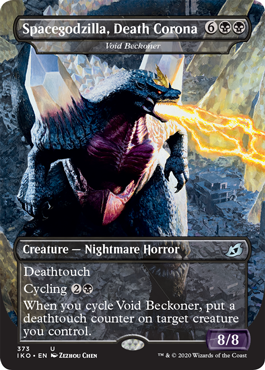
Lastly, we have to talk about WotC’s statement on Spacegodzilla. In what will go down in history as a marketing executive’s worst nightmare, WotC named one of their new Godzilla cards after Spacegodzilla’s classic weapon, which just so happens to also be the name of the deadly virus that’s ravaging the globe right now. Whoops!
Financially, Spacegodzilla, Death Corona is going to be pretty darn valuable. The fact that the card references a massive global event in an inadvertently tasteless way and will be removed from the set after the first printing means that demand will be incredibly high on the collectibles market. The card isn’t for sale on Star City Games yet, but non-foil copies have pre-sold as high as $65 on eBay with foils pre-selling as high as $130. I might do a full article on this card at some point, but for now I would assume that it’s going to start expensive and stay expensive, regardless of how playable it is. In fact, Ikoria Collector Boosters are likely under-priced right now just because of the increased possibility of opening one of these.

